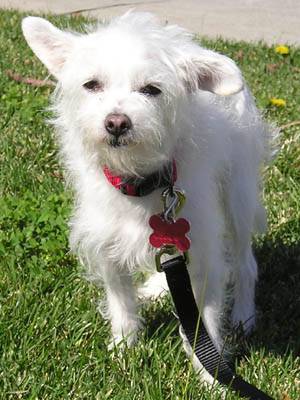Keras Cats Dogs Tutorial
Quick link to my GitHub code: https://github.com/jkjung-avt/keras-cats-dogs-tutorial
Recently I started to learn Keras. Overall I found Keras did live up to its fame. It is quite user-friendly and easy to learn, while also being extensible for handling more recent and advanced deep learning tasks.
While there are many good examples online to get you started tackling image classification tasks using Keras, most of them are lacking in terms of how to take advantage of Keras’ built-in image augmentation functionalities to achieve best classification accuracy. Nonetheless, the following article on ‘The Keras Blog’ serves as a good starting point in that direction.
Building powerful image classification models using very little data
I wanted to build on it and show how to do better.
Prerequisite
- Have Keras with TensorFlow banckend installed on your deep learning PC or server.
In my own case, I used the Keras package built-in in tensorflow-gpu. And I’ve tested tensorflow verions 1.7.0, 1.8.0, 1.9.0 and 1.10.0. They all work OK. Reference: Installing TensorFlow on Ubuntu
Step-by-step
-
Download the code from my GitHub repository
$ cd ~/project $ git clone https://github.com/jkjung-avt/keras-cats-dogs-tutorial.git $ cd keras-cats-dogs-tutorial -
Prepare train/validation data
Download
train.zipfrom the Kaggle Dogs vs. Cats page. You’d probably need to register a Kaggle account to do that.Following the (Keras Blog) example above, we would be working on a much reduced dataset with only 1,000 pictures of cats and 1,000 of dogs. In addition, we would take some additional 400 pictures of cats and 400 of dogs as the validation set.
$ cd ~/project/keras-cats-dogs-tutorial $ mkdir catsdogs $ cd catsdogs $ unzip ~/Downloads/train.zip $ cd train $ mkdir -p ../sample/train/cats $ cp cat.?.jpg cat.??.jpg cat.???.jpg ../sample/train/cats/ $ mkdir -p ../sample/train/dogs $ cp dog.?.jpg dog.??.jpg dog.???.jpg ../sample/train/dogs/ $ mkdir -p ../sample/valid/cats $ cp cat.1[0-3]??.jpg ../sample/valid/cats/ $ mkdir -p ../sample/valid/dogs $ cp dog.1[0-3]??.jpg ../sample/valid/dogs/After the steps above we ended up with the following in the
sampledirectory, which is how Keras’ ImageDataGenerator.flow_from_directory() expects data to be organized../catsdogs/sample/ ├── train/ │ ├── cats/ │ │ ├── cat.0.jpg │ │ │ ... │ │ └── cat.999.jpg │ └── dogs/ │ ├── dog.0.jpg │ │ ... │ └── dog.999.jpg └── valid/ ├── cats/ │ ├── cat.1000.jpg │ │ ... │ └── cat.1399.jpg └── dogs/ ├── dog.1000.jpg │ ... └── dog.1399.jpg -
Train a ResNet50 based classifier on the dataset
Run the following command. Note that I was getting over 98% accuracy on the validation set with only the 1st epoch of training. And after 20 epochs I got a classifier with 99% validation accuracy. That was significantly better than the Keras Blog example.
$ python3 train_resnett50.py ...... Found 2000 images belonging to 2 classes. Found 800 images belonging to 2 classes. **************** Class #0 = cats Class #1 = dogs **************** ...... Epoch 1/20 250/250 [==============================] - 41s 163ms/step - loss: 0.3811 - acc: 0.8155 - val_loss: 0.0647 - val_acc: 0.9825 Epoch 2/20 250/250 [==============================] - 35s 140ms/step - loss: 0.1790 - acc: 0.9290 - val_loss: 0.0513 - val_acc: 0.9850 ...... Epoch 20/20 250/250 [==============================] - 35s 140ms/step - loss: 0.0192 - acc: 0.9940 - val_loss: 0.0317 - val_acc: 0.9900 -
Test the trained model
The trained model should have been saved as
model-resnet50-final.h5in the previous step. Here I picked a picture from the original dataset for testing. And the model predicted this picture being a dog (with 1.000 probability), which was good~$ python3 predict_resnet50.py /data/catsdogs/train/dog.12499.jpg ...... /data/catsdogs/train/dog.12499.jpg 1.000 dogs 0.000 cats
Discussion
The Keras Blog example used a pre-trained VGG16 model and reached ~94% validation accuracy on the same dataset. I think my code was able to achieve much better accuracy (99%) because:
- I used a stronger pre-trained model, ResNet50.
- I trained the classifier with larger images (224x224, instead of 150x150).
- I did pretty heavy data augmentation on the training images. For this, I took advantage of Keras’ ImageDataGenerator’s built-in image augmentation functionalities, including random rotation, randaom shift in both x and y directions, shearing, zooming, adding noise (channel shift), and horizontal flipping, etc.
train_datagen = ImageDataGenerator(preprocessing_function=preprocess_input,
rotation_range=40,
width_shift_range=0.2,
height_shift_range=0.2,
shear_range=0.2,
zoom_range=0.2,
channel_shift_range=10,
horizontal_flip=True,
fill_mode='nearest')
My train_resnet50.py and predict_resnet50.py scripts could be very easily adapted to handle other image classification datasets. Feel free to give it a try and leave a comment below if any.